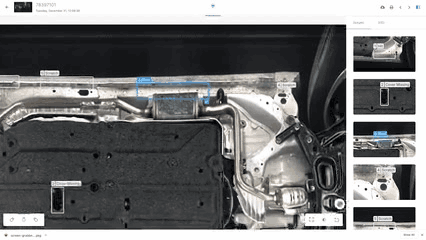How Dealerships Can Start Selling Online
The way customers buy cars has changed, and probably forever. Rather than spending hours browsing car lots to find the perfect vehicle, shoppers are increasingly spending their time online to narrow down their selection. On average, shoppers spend around 14 hours online researching to find the right vehicle, according to Cox Automotive. Ultimately, many of those shoppers would buy a car sooner if online car sales are an option.
However, few dealerships have an effective strategy for completely selling cars online. Off-site test drives and video walkaround tours are becoming common practice, but for a customer to take ownership, they almost always have to make an in-person visit. Think with Google reports that 18% of shoppers would buy a vehicle sooner if they could buy it completely online.
What’s holding car dealerships back from implementing a fully online selling capability? What does an effective strategy look like? What hurdles do dealers have to overcome, and where are the benefits to selling online?
Why online car sales are slow to grow
At this time, all states permit dealerships to sell cars online. End to end – from initial contact to delivery – the complete process can be completed anywhere in the U.S. While some slow-changing dealers might believe there are regulatory hurdles, there’s no reason why a dealer can’t sell a car online to someone who desires to purchase a vehicle without a visit to the dealership.
Instead, it’s perception. Speaking with The Detroit News in April, one general manager believes online sales will only make up about 10% of their business. He said, “People still want to test drive cars. They still want to come in and look at a few different vehicles. Negotiate. Put their hands on them.”
That may be true for many car shoppers, but certainly not all.
The online car buying trend is growing. But how can dealerships do it well?
Establish an Online Strategy
These are five tools dealerships can use as alternatives to a visit to the brick-and-mortar store:
At-home test drives
A strategy many dealers are already embracing is to offer off-site test drives. Whether meeting a shopper in an empty parking lot or at their home, physical test drives without having to visit the dealer are a popular method. However, it’s not always a necessity, especially for new car buyers.
Virtual showroom
Providing a customer with choices online helps them feel in control of their shopping experience with transparent prices, whether for new or pre-owned cars.
Walkthrough videos
Taking a customer around and through the exact model they’re looking at remotely often adds value for the shopper and builds a level of trust. And where the customer can’t normally see in detail, a comprehensive inspection process can help remove obstacles to purchasing.
Online configurator
Dealers can implement online configurators powered by the manufacturer, allowing them to identify the exact model and trim the customer desires. That way, matching the shopper with the right vehicle is easier.
Secure document signing
Providers such as DocuSign and HelloSign, not to mention options tied to CRMs, let customers complete the documentation without visiting the store in person even once.
These tools are necessary to allow the option to purchase online. Still, dealers need to do more in order to make shoppers comfortable with a fully online car buying process.
Selling new cars online from franchised dealerships requires building trust regarding the process as well as the price. Shoppers are more inclined to complete their buying experience when it seems like the dealership has provided everything, no holds barred. Although the shopper hasn’t touched the car in person or driven it, it’s logical to believe the vehicle is in perfect shape and operating as designed.
Selling used vehicles online is slightly different. A shopper could be more hesitant to purchase a used car without first ensuring it’s exactly as promised. Without checking for problems around and under the vehicle, they may not be willing to take the chance.
However, that hesitation can be mitigated with a comprehensive inspection process. Not only is a complete safety certification and multipoint inspection absolutely necessary, but a detailed visual inspection can wipe away worries.
UVeye’s vehicle inspection technology can provide detailed inspection reports that shows a buyer the actual condition a car is in using high-resolution imagery. That includes exterior damage down to a fraction of an inch, mechanical concerns such as oil leaks from undercarriage photos, and tire and rim condition including exact measurements of tread depth and wheel scratches.
Transparency is key for used car buyers even more so than with new car buyers. To convert more online shoppers into online car sales, dealerships need to demonstrate that a shopper’s potential vehicle at delivery will be in exactly the condition they expect.
Not only will online sales conversion rates go up with a process as transparent and comprehensive as UVeye digital inspections, but gross profit is higher. Since shoppers can be more confident that the vehicle is in the condition they expect, concerns about overpaying based on condition are quelled.
And for customers who truly want to negotiate a deal, salespeople can hold the line better since there’s indisputable proof the vehicle is proper.
When you’re attempting to increase contactless transaction rates through online selling, the same reasoning holds true. Customers often feel that the stopgap is signing the contract. Before they sign on the dotted line, they want to physically inspect the car.
When that final inspection has been completed digitally through UVeye, customers are more comfortable, confident, and inclined to sign complete the deal fully online.
Online car sales aren’t just a fad. They’re here to stay, and customers are demanding that dealers offer online selling. Develop an effective strategy with online tools to make customers comfortable with the process including easy shopping tools, videos, pricing transparency, and automated inspections.

